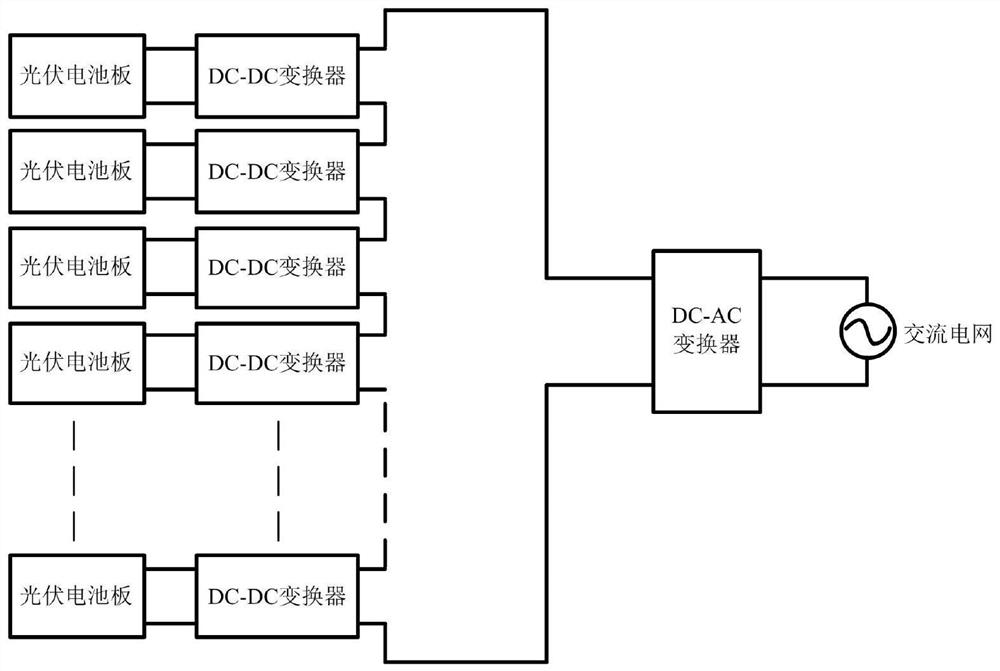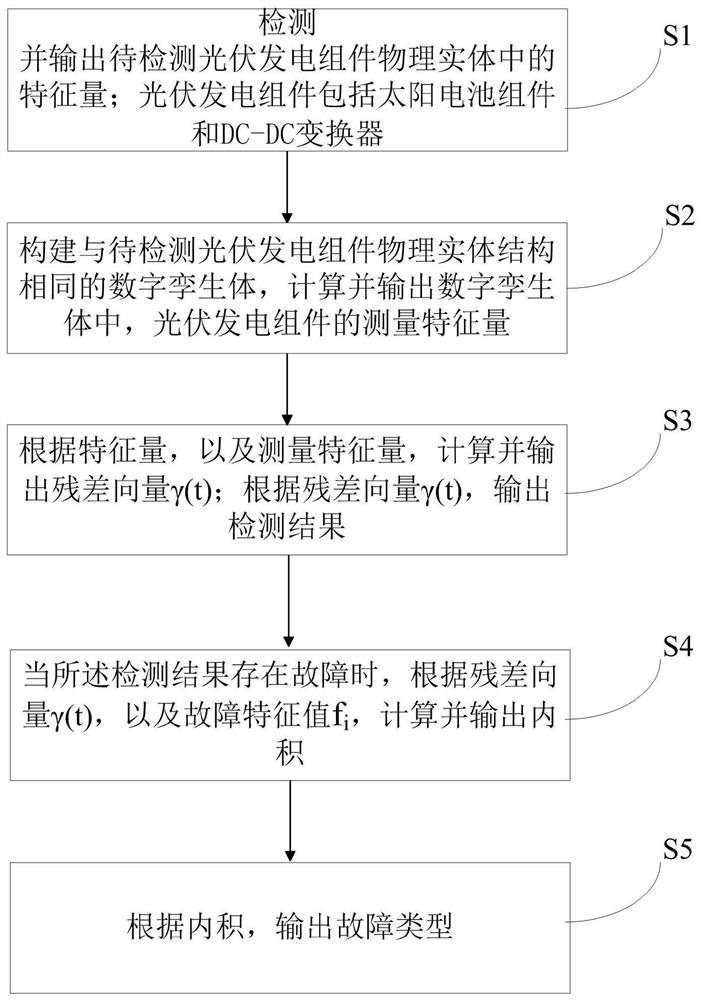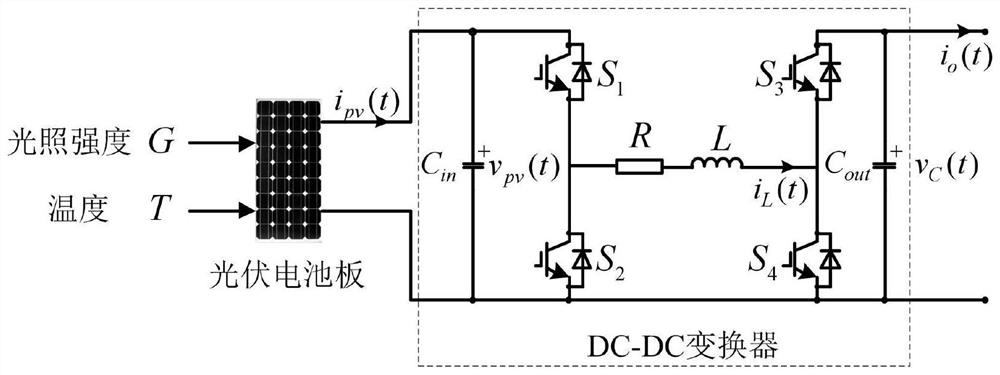A method for fault detection and identification of photovoltaic power generation components based on digital twin
A photovoltaic power generation and fault detection technology, applied in the field of solar photovoltaic power generation, can solve the problems of many photovoltaic panels and DC-DC converters, and achieve the effects of high efficiency, high flexibility and strong reliability
- Summary
- Abstract
- Description
- Claims
- Application Information
AI Technical Summary
Problems solved by technology
Method used
Image
Examples
example 1
[0090] Example 1: Calculation of fault characteristics when the fault type of solar cell module is i=1
[0091] The failure is due to the solar cell module being shaded (due to dust etc.). it causes failure of the panel (Light intensity is G ref =1000W / m 2 , the temperature is T ref = Under the condition of 25℃, when the maximum power is reached, the output current of the solar cell module) is in G ref (G ref =1000W / m 2 ) occurs when change (at this time changes are negligible). Therefore, the characteristic quantity y(t) in the physical entity of the photovoltaic power generation module to be detected in a steady state is obtained as:
[0092]
[0093] In formula (10), i o (t) is the output current of the DC-DC converter; D 3 , D 1 are the switching devices S 3 , S 1 The duty cycle of ; R is Figure 4 the resistance in the physical entity shown; is the light intensity G in the digital twin ref =1000W / m 2 , the temperature is T ref = Under the conditi...
example 2
[0098] Example 2: Calculation of fault characteristics when DC-DC converter fault type i=4
[0099] refer to image 3 As shown, if the switching device S 1 An open circuit fault occurs, and the fault event will cause the solar cell module output to open circuit. At this time, in this case, the residual vector γ(t)=z(t)-y(t), that is, equation (9) minus equation (10), the residual vector γ(t) is y(t) )=E[0,0,0,V oc ] T . The residual γ(t) is generated and analyzed to obtain the fault characteristic value f 4 and Similarly, the characteristic values of other fault types of DC-DC converters listed in the table below can be obtained by calculation.
[0100] Table 2 DC-DC converter faults
[0101]
[0102]
[0103] table, I sc is the short-circuit current of the solar cell module; V oc is the open circuit voltage of the solar cell module; D 1 is the switching device S 1 The duty cycle of ; D 3 is the switching device S 3 duty cycle.
example 3
[0104] Example 3: Calculation of eigenvalues when the fault type of electrical sensor is i=12
[0105] For measuring the inductor current i L (t) sensor considering gain drift Δc 12 (t) Drift and deviation of the measured value from the exact value Δe 12 (t) deviation. In the measured physical system, the failure of such a sensor can be modeled as:
[0106]
[0107] In formula (11), E is the unit matrix of the electrical sensor gain; ΔC(t) is the drift of the gain; i L (t) is the current flowing through the inductor L in the physical entity; v c (t) is the output voltage of the DC-DC converter in the physical entity; i pv (t) is the output current of the solar cell module in the physical entity, v pv (t) is the output voltage of the solar cell module in the physical entity; ΔE(t) is the deviation.
[0108] In this case, the residual γ(t)=z(t)-y(t), that is, γ(t)=[Δc 12 (t)i L (t)+Δe 12 (t),0,0,0] T . Therefore, the fault characteristic value f 12 =[1,0,0,0] ...
PUM
 Login to View More
Login to View More Abstract
Description
Claims
Application Information
 Login to View More
Login to View More - Generate Ideas
- Intellectual Property
- Life Sciences
- Materials
- Tech Scout
- Unparalleled Data Quality
- Higher Quality Content
- 60% Fewer Hallucinations
Browse by: Latest US Patents, China's latest patents, Technical Efficacy Thesaurus, Application Domain, Technology Topic, Popular Technical Reports.
© 2025 PatSnap. All rights reserved.Legal|Privacy policy|Modern Slavery Act Transparency Statement|Sitemap|About US| Contact US: help@patsnap.com



